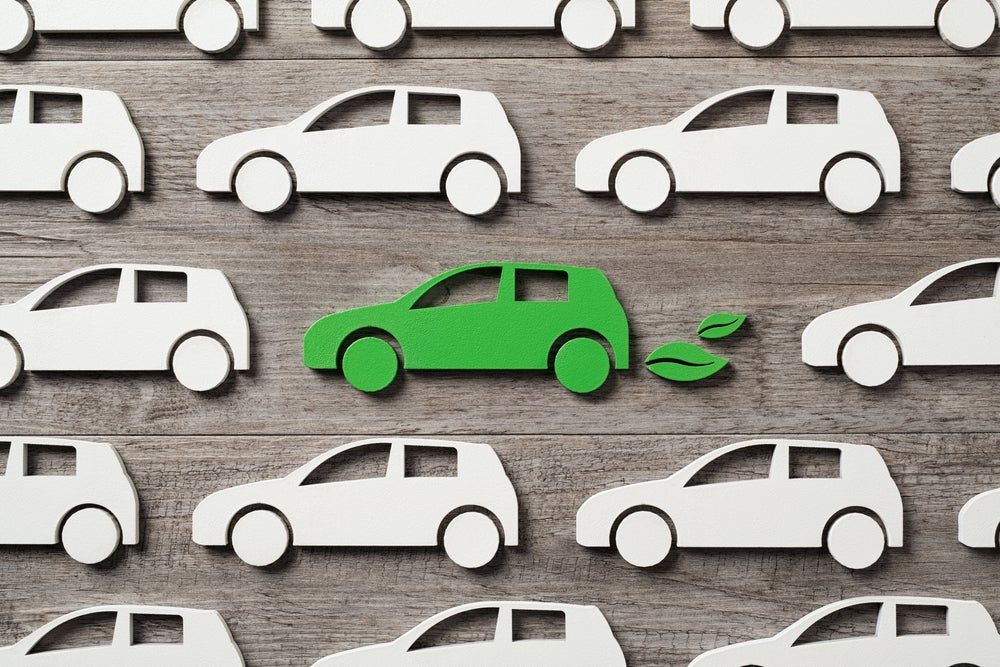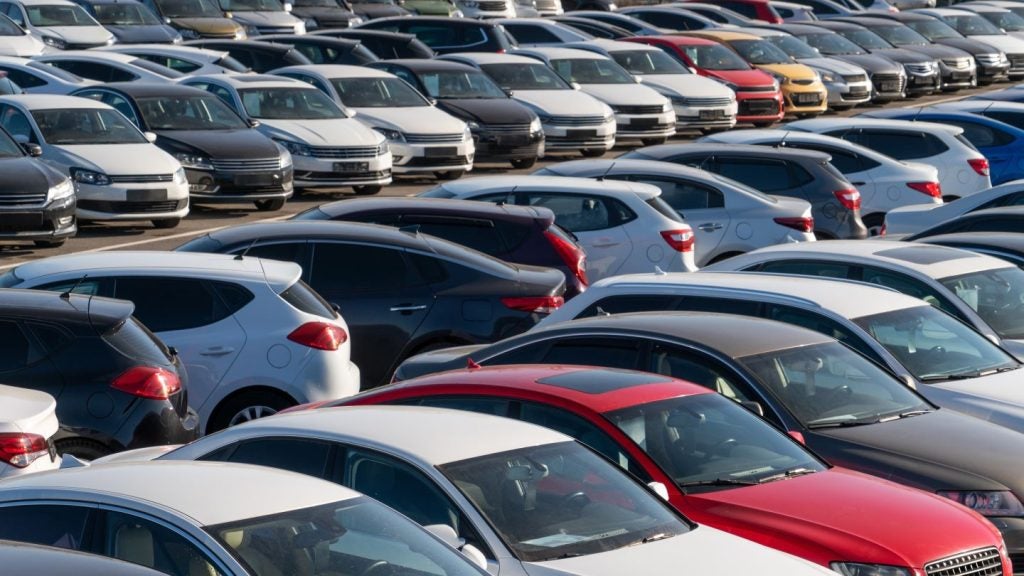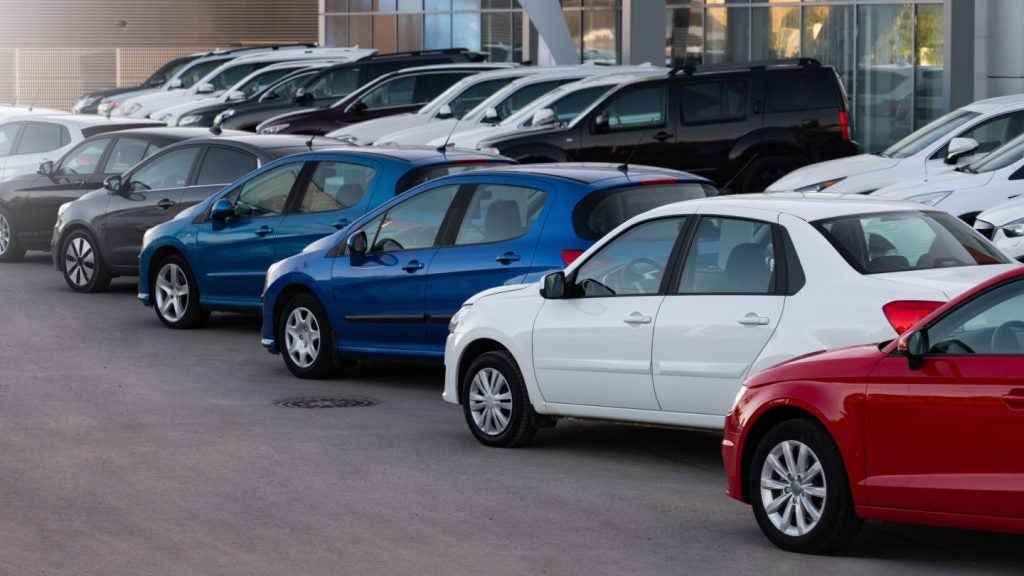
In the auto sector, most OEMs aim to reach net zero by 2050, but emissions reporting and standards remain weak. Incoming regulatory pressure on emissions will require companies to improve their emissions reporting and curate more pragmatic net-zero strategies.
Emissions from business operations (Scope 1 and 2) only make up around 1% of total emissions. The transition to using renewable energy is the best way to reduce Scope 1 and 2 emissions. This can be achieved through directly installing renewable energy sources on-site or purchasing electricity from renewable energy providers.
Value chain emissions (Scope 3) comprise 99% of total emissions. Most of these arise from the production of purchased goods and services and the use of sold vehicles. The sector’s main decarbonization strategy is the electrification of vehicle fleets. Yet, most automakers are behind on their electrification targets.
Moreover, the production of electric vehicles (EVs) emits more emissions than the production of internal combustion engine (ICE) vehicles. This presents additional challenges and means automakers must adopt a circular business model and increase the use of sustainable materials. This will help automakers reduce the environmental impact of EV production.
Tesla has successfully offset its operations through carbon credits received through its energy business. However, most OEMs should avoid investing in carbon offsets. Carbon offset projects are facing increased scrutiny from environmental activists over their effectiveness in reducing overall global emissions. Investment in clean technologies is a far more effective method of sustainably reducing net carbon emissions, as the carbon offset market will likely become more heavily regulated.
Across the world, regulatory regimes are increasingly driving corporate decarbonisation. This takes a number of forms, including:
How well do you really know your competitors?
Access the most comprehensive Company Profiles on the market, powered by GlobalData. Save hours of research. Gain competitive edge.

Thank you!
Your download email will arrive shortly
Not ready to buy yet? Download a free sample
We are confident about the unique quality of our Company Profiles. However, we want you to make the most beneficial decision for your business, so we offer a free sample that you can download by submitting the below form
By GlobalDataFossil fuel phase-outs. Many governments have committed to phasing out fossil fuel use. A number of countries have pledged to ban the sale of new petrol and diesel cars by 2035 and many countries are seeking to replace gas boilers with heat pumps. This is on top of commitments to source more energy from renewable like solar and wind.
Emissions pricing. Many countries, including the EU and China, are introducing emissions trading systems or enhancing existing ones to cover more sectors. It means companies with higher-emission value chains will face higher costs.
Mandatory reporting. Mandatory sustainability reporting standards are being adopted globally. In 2023, the International Sustainability Standards Board published standards that are widely expected to become the global baseline for climate reporting and include requirements to report Scope 3 emissions. Increased transparency will put pressure on firms to reduce emissions over time.
State support for low carbon economy. Governments are competing for leadership in the production of low-carbon technologies. China dominates global production of batteries and solar panels and their supply chains. The US aims to re-shore production with the Inflation Reduction Act, announced in 2022, and the EU aims to do the same with the Net Zero Industry Act.
What are net zero emissions?
- Scope 1 emissions derive from sources owned or controlled by the company.
- Scope 2 emissions are emissions from purchased energy. For most companies, this will be purchased electricity.
- Scope 3 is the most challenging to calculate for most businesses. It covers emissions a business is indirectly responsible for, through its suppliers and customers. They are produced by assets the business does not own or control.
Net zero means cutting greenhouse gas emissions to as close to zero as possible, with any remaining emissions then “offset”. Firms that achieve net zero emissions may say they are “carbon neutral”.
Companies typically first aim to achieve net zero operations by reducing their Scope 1 and 2 emissions and purchasing offsets. Many automotive factories now showcase their Scope 1 and 2 efforts with energy turbines and extensive use of solar panels to provide energy for manufacturing activity and displace the more CO2-intensive electricity that would come from the grid.
Companies can then achieve net zero value chains by reducing their Scope 3 emissions and purchasing offsets to offset the remainder. For most companies, Scope 3 emissions are the largest and most difficult to measure and reduce.
Emissions are offset by supporting projects that reduce emissions or remove greenhouse gases from the atmosphere.
Companies are under pressure to cut emissions as countries aim to achieve their climate commitments.
Every major economy has signed up to the Paris Agreement, the global climate agreement that commits signatories to keep global warming well below 2C above pre-industrial levels.
Electrification is key on Scope 3
All OEMs intend to increase their battery electric vehicle (BEV) and hybrid offerings within the next decade, with many promising to have an all electrified fleet by 2030. Some automakers are also investing heavily in hydrogen fuel cell electric vehicles (FCEVs), but these come with higher development costs and fuelling infrastructure challenges – and are widely considered as further out than BEVs for major commercial application.
To reach net zero targets, OEMs should prioritize increasing battery EV production and sales over other hybrid and low-emissions vehicle options. However, there are a few challenges to OEMs’ net zero targets, namely:
- Improvements in EV production capacity are necessary to reach electrification targets.
- There is some concern over market demand for EVs. In October 2023, Ford and GM pushed back their electrification targets and spending on EVs due to lower-than-forecast demand.
- Development of alternatives to lithium-ion batteries and other LEV technologies should continue as supply volatility in the batteries market may cause unforeseen materials price hikes and supply chain disruption.
EV production emits more emissions than the production of traditional internal combustion engine (ICE) vehicles. This means automakers must also adopt a circular business model and increase the use of sustainable materials to mitigate the environmental impact of EV production.
Carbon offsets should be avoided
A carbon offset is a reduction or removal of carbon dioxide (CO₂) or other greenhouse gases to compensate for emissions made elsewhere. Companies purchase them to reduce their net emissions when they cannot adequately cut emissions from direct activity. In the auto sector, carbon offsets are mostly used to mitigate Scope 1 and 2 emissions.
For the most part, OEMs should avoid investing in offsets and instead focus on investing in green energy and electrifying their vehicle fleets. Carbon offset projects, especially reforestation projects, are increasingly facing scrutiny over their dubious carbon-neutral claims, and carbon markets are becoming increasingly regulated by government bodies.
Companies can consider establishing carbon removal projects, allowing them to keep a closer eye on project performance. However, this requires significant investment. Technology-based carbon removals, such as direct air capture and biochar, where the amount of CO₂ removed is exact and measurable, will be a future option but have not yet scaled and remain expensive.
Circular economy and sustainability challenges
The production of electric vehicles (EVs) emits more emissions than the production of internal combustion engine (ICE) vehicles. This presents additional challenges and means automakers must adopt a circular business model and increase the use of sustainable materials. This will help automakers reduce the environmental impact of EV production.
Automakers are investing in low-emission steel and aluminium in vehicle manufacturing, improving EV batteries’ lifecycles, and increasing the recycling of old parts and materials.
More: Net Zero Strategies in the Automotive Sector – Thematic Intelligence







